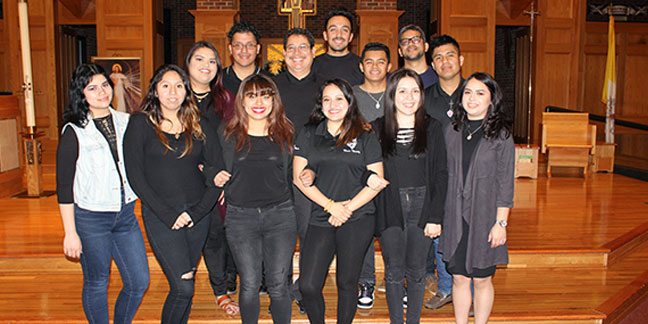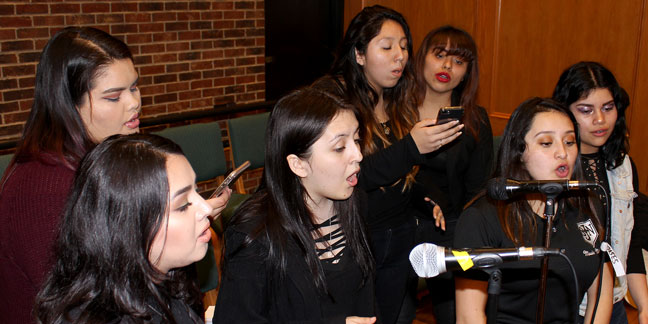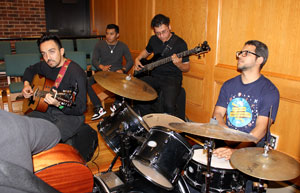 VATICAN CITY — Pope Francis will create 14 new cardinals during a late afternoon consistory June 28, not June 29 as he had announced originally.
VATICAN CITY — Pope Francis will create 14 new cardinals during a late afternoon consistory June 28, not June 29 as he had announced originally.
The date change was included in the schedule of papal liturgies through August, which was released by the Vatican May 29.
The schedule also confirmed that Pope Francis will celebrate the feast of the Body and Blood of Christ June 3, not in Rome as has been the tradition since 1979, but in the seaside town of Ostia, about 16 miles west of Rome. The evening Mass outside St. Monica Church will be followed by a Corpus Christi procession to the Church of Our Lady of Bonaria.
Ostia was where St. Monica, the mother of St. Augustine, died in 387 on a journey back to Africa after St. Augustine's conversion to Christianity. The ancient city's name is related to the Latin word for "mouth" because it was a port area at the mouth of the Tiber River. In modern Italian, "ostia" is the word for the Eucharistic host.
During his pontificate, Blessed Paul VI celebrated the feast day in various neighborhoods in and around Rome, including in Ostia in 1968. St. John Paul II fixed the celebration at St. John Lateran, the cathedral of the Diocese of Rome, followed by a Corpus Christi procession to the Basilica of St. Mary Major.
Covering the months of June, July and August, the pope's liturgical schedule includes:
-- An "ecumenical pilgrimage" to Geneva June 21.
-- The creation of new cardinals June 28 in St. Peter's Basilica.
-- Mass in St. Peter's Basilica June 29, the feast of Sts. Peter and Paul, with the blessing of palliums for archbishops named to their archdioceses over the course of the past year.
-- An ecumenical gathering July 7 in the southern Italian city of Bari for prayers for peace in the Middle East. Bari's ancient basilica dedicated to St. Nicholas is an important place of pilgrimage for both Catholics and Orthodox Christians.
-- Apostolic visit to Dublin Aug. 25-26 for the final days of the World Meeting of Families.
— Carol Glatz, Catholic News Service
Pictured at top: Pope Francis is pictured during an audience in St. Peter's Square at the Vatican in this June 30, 2016, file photo. (CNS photo/Paul Haring)
En la Iglesia St. John Neumann CHARLOTTE — Moisés Cisneros, un salvadoreño de San Miguel llegado en 1986 a los Estados Unidos, es el director del Ministerio de Música en San John Neumann, iglesia en la que ha reunido un grupo de talentosos jóvenes dedicados a alabar al Señor a través del canto y la ejecución de instrumentos.
CHARLOTTE — Moisés Cisneros, un salvadoreño de San Miguel llegado en 1986 a los Estados Unidos, es el director del Ministerio de Música en San John Neumann, iglesia en la que ha reunido un grupo de talentosos jóvenes dedicados a alabar al Señor a través del canto y la ejecución de instrumentos.
Con una larga carrera en la música, Cisneros comenzó hace siete años la organización del Coro con la participación de sus dos hijas. Tras un inicio incierto, poco a poco se fueron incrementando los integrantes hasta alcanzar los más de 16 miembros con los que cuentan en la actualidad.
Muchos de ellos comenzaron desde niños y todos, reconoce Cisneros, “proporcionan una riqueza especial al grupo”.
“Nos hemos enamorado de Jesús”, explica el director, “y cuando el pequeño talento que tenemos lo entregamos para la alabanza de Dios, éste se engrandece y nos proporciona un gozo que solo nosotros podemos sentir”, dijo, justificando con esta afirmación la permanencia de todos ellos en la agrupación musical, ya que “con cada alabanza va creciendo más y más el amor a Dios”.
Cantan por amor
Mónica López, la más joven de los integrantes ingresó al Coro hace tres años, cuando cursaba el octavo grado de la escuela, gracias a la invitación de una amiga que la llevó a uno de los ensayos. “Ese mismo día le dije a mi mamá que quería estar en el Coro” y, gracias a Dios, su madre no le puso ninguna traba.
“No soy Mónica cuando canto. Me siento libre, el espíritu me toca. Me pongo diferente, contenta. Cantar a Dios me libra de los problemas, de las tensiones de la escuela. A veces me hace llorar, pero de alegría, del amor que tengo a Dios”, nos confiesa la joven que sueña más adelante en convertirse en doctora.
Para Sonia Cisneros, hija de Moisés y fundadora del Ministerio, el pertenecer al Coro “es una terapia para nosotros los jóvenes”, que hallan “un refugio” en lo que considera más que un grupo “una familia”, donde la comunión entre los integrantes hace que todos ellos también crezcan individualmente “en sus voces y espiritualidad”. Para la joven en ocasiones es difícil hablar, por lo que “cantar es una buena manera de decir las cosas”. Aunque precisa que no es lo mismo cantar “para el mundo”, donde solo deseas demostrar tu talento, “pues cuando cantas para Dios sientes algo diferente, que es muy difícil de describir”.
 El director, que reconoce que “de vez en cuando es un dolor de cabeza trabajar con jóvenes”, asegura que el grupo ha madurado muchísimo y “hay testimonios del sacrificio de muchos de los jóvenes por permanecer aquí, lo que demuestra que ellos aman lo que hacen y que su amor a Dios crece con cada alabanza”.
El director, que reconoce que “de vez en cuando es un dolor de cabeza trabajar con jóvenes”, asegura que el grupo ha madurado muchísimo y “hay testimonios del sacrificio de muchos de los jóvenes por permanecer aquí, lo que demuestra que ellos aman lo que hacen y que su amor a Dios crece con cada alabanza”.
Todo el grupo se ve a sí mismo como una familia, se protegen mutuamente, son cuidadosos y responsables en todos sus actos. “En retiros, en oración, nos repetimos eso, que somos una familia y entendemos que si alguno de nosotros hace algo que no está bien, eso va a afectar al grupo y sobre todo a la Iglesia, que es el cuerpo de Cristo. Algo que no queremos que suceda”.
Al parecer, es el ardiente deseo de alabar a Dios lo que los hace diferentes. Mucha gente se les acerca después de Misa y les comenta que el Espíritu Santo los toca cuando ellos cantan. “Para nosotros eso es maravilloso porque nos hace saber que Dios nos está usando como instrumento suyo”, afirma Cisneros, adelantando que ya trabajan en un proyecto de producción de un CD con temas propios, que esperan pueda concretarse a finales de año.
Israel Rivas, músico percusionista nacido en la República Dominicana, se unió hace más de dos años a este Ministerio. “Mi esposa y yo buscábamos un lugar donde servir. Yo quería participar en el Ministerio de Oración, así que hablé con Moisés, el director, y entre ensayo y ensayo, poco a poco me amarré al Ministerio de Música”, dijo sonriente.
Para Rivas, “a través de la música cristiana se siente una libertad trascendental donde no importa lo que suceda. Vives las canciones y sientes que ellas se vuelven una oración contigo”.
 El dominicano advierte que es posible dedicarse a la música secular “y te va a dar las condiciones, una vida, pero al estilo que manda la casa disquera”, por lo que, en este sentido, “la mayor paga que uno puede tener como músico de iglesia es dar alabanza al Señor con la música que uno produce”.
El dominicano advierte que es posible dedicarse a la música secular “y te va a dar las condiciones, una vida, pero al estilo que manda la casa disquera”, por lo que, en este sentido, “la mayor paga que uno puede tener como músico de iglesia es dar alabanza al Señor con la música que uno produce”.
Únete
El Ministerio de Música se reúne para ensayar todos los miércoles a las 7:30 pm en el templo de la Iglesia San John Neumann, 8451 Idlewild Rd. Charlotte, NC 28227. Si desea integrarse, las inscripciones están permanentemente abiertas.
Para el director, los requisitos son un poquito de talento, ganas de trabajar y mucho compromiso ya que, especialmente en fiestas, hay que dedicar tiempo a las presentaciones, dejando de lado otros compromisos.
“No tengan miedo de ingresar a este Ministerio. La experiencia que me he llevado es única y maravillosa. Se las recomiendo”, finalizó.
— César Hurtado, Reportero Hispano

